|
We woke up early on our first day in Quito. Because we required a negative PCR test to be done within 72 hours of entering Galapagos, and our PCR test to enter Ecuador had been taken outside of that window, our tour operator had arranged for us to receive a test at our hotel in Quito. The technician was scheduled to arrive at 8:00am and by 8:05 we received a call in our room to let us know she had arrived. We had the option to take the test in our room or in a conference room off the main lobby. We opted for the conference room since we would then be ready for our private tour of Quito which was scheduled to leave the hotel at 8:30. The PCR test that we had received in Ontario before we left Canada had been fairly innocuous. This latest test seemed far more invasive and lasted several seconds longer than our Canadian test. We were more than willing to put up with the discomfort and were told that our results would be emailed to us after 6:00pm on the same day. This was substantially faster than the 5-day turnaround for our Ontario test. It was nearly 8:30am by the time we had both finished being tested and we only waited about 5 minutes in the hotel lobby before our guide, Alejandro, texted us to let us know he had arrived. We met him in the lobby, and he directed us to his car parked outside the hotel. He sprayed our hands and shoes with disinfectant before we could enter the vehicle. We drove through the downtown and then began winding our way through the narrow streets up the mountain towards one of the iconic symbols of Quito – the 41-metre-high aluminum statue of the Virgin Mary that overlooks the city and surrounding valley. Alejandro was proud to point out that the Virgin Mary is actually taller than Christ the Redeemer statue in Brazil by 3 metres. It also happens to be the tallest aluminum statue in the world. Since there were no other tourists, we were able to park at the base of the statue and spend several minutes taking unobstructed photos of the monolithic figure. She is graced with large, open wings and is clenching a long thick chain which is tethered to a snake that is the representation of evil. From the statue, we walked down a flight of steps and crossed the road leading away from the monument where we had a wonderful panoramic view of Quito, sprawling through the valley of Pichincha, the volcano that forms the western border of the city. Migrants and recent immigrants have started building illegal homes on the sides of Pichincha, despite the substantial number of eruptions and several hundred tremors per month that emanate from its mass. The city streets are laid out in typical Spanish style running in symmetrical perpendicular lines. The panoramic view from this elevated location allowed us to see the 42 Catholic churches that are laid out in the shape of a crucifix, with the beautiful Basilica built at the head of the cross. Alejandro provided us with an overview of the city before we returned to his car to drive to the old town. Quito is situated 2820 metres above sea level and is the closest capital city to the equator which passes just one kilometer outside the city limits. In 1978 it was the first city in the world to be designated a UNESCO World Heritage Site due to its incredible geography and the preservation of its colonial past which is exemplified throughout the city. We left the heights of El Panecillo Hill and continued our tour of the old town at the city’s main square, Plaza de la Indepencia, which commemorates the First Cry of Independence from the Spanish monarchy in 1809. The sprawling square plaza is bordered by the Carondelet Palace, the Metropolitan Cathedral, the Archbishop's Palace, the Municipal Palace, and the Plaza Grande Hotel. Beside the Metropolitan Cathedral is the church of Nuestra Senora de la Merced. The classic white building was constructed in the early 1700’s and consists of 5 domes and a square tower. The interior is decorated with Incan and Moorish inscriptions. We walked a short distance from the square to another significant church in Quito – the Church of La Compania de Jesus. This Jesuit church is an elaborate and ornate structure that took 160 years to build from 1605 to 1765. It is adorned in glittering gold leaf, gilded plaster and wood carvings. The brilliance of the gold covering nearly every part of the interior is breathtaking and is why La Compania de Jesus is called the Church of Gold. Nearly 10% of the church was destroyed in a fire in 1996 when an overloaded electrical outlet exploded during a renovation. According to Alejandro, the subsequent 10-year restoration is estimated to have cost nearly 14 billion dollars. Unfortunately they do not allow pictures inside. Just a stone’s throw from the Church of La Compania de Jesus sits the largest colonial architectural ensemble in Latin America – the Iglesia y Convento de San Francisco (the Church and Convent of St. Francis). This 16th century complex is set in front of a large courtyard that gets its name from the church. The expansive courtyard was lifted stone by stone during the construction of the Quito metro and then replaced after the construction of the subway at the end of the last decade. One of the fascinating aspects of our walk through the colonial downtown during this phase of the Covid pandemic was the strict adherence to Covid health protocols. As Canadians visiting this Latin American city we were impressed and relieved to see the protocols were followed by everyone. In Canada, wearing face masks outside was extremely rare. In Quito, as well as the rest of Ecuador, masks were worn by everyone, all the time. Prior to entering any church, museum, or restaurant we had to go through a disinfection process where we were sprayed and then walked through a foot bath to disinfect our shoes. Following the disinfection process our temperatures were taken before we were allowed to enter any venue. We continued our walk through the colonial downtown and eventually found our way to the Diosolopay Restaurant where we stopped for lunch. We entered the restaurant through an open Spanish courtyard bordered by large archways. We selected an outside table in the courtyard where we were able to enjoy the fresh air and ambiance of the square. This restaurant is known for its Ecuadorian fare and Alejandro suggested that we try the Locro de Papa which is a classic Ecuadorian soup made with potato, cheese and avocado. This was an excellent choice as the soup was bursting with rich flavour and it became a staple for us at different restaurants during our stay in Ecuador. After lunch we made a quick visit to the Basilica del Voto Nacional, the largest neo-gothic church in South America. This church has a fascinating history, having been conceived as an idea in 1883 it took until 1894 before construction began and after that, 30 years to complete. It was not until 1985 that the church was blessed by Pope John II and finally inaugurated in 1988. The church will never be officially recognized as “completed” since legend suggests that once it is finished, the end of the world will come. The Basilica is visually striking from the outside and is adorned with local animals such as turtles and iguanas instead of the traditional gargoyles that are often seen on other neo-gothic churches. From the Basilica, Alejandro drove us to the TelefériQo Cruz Loma, a gondola lift that starts from the edge of the city centre and rises nearly 800 metres up the east side of Pichincha Volcano to lookout Cruz Loma. It is one of the highest aerial lifts in the world taking about 15 minutes to reach its maximum height of nearly 4000 metres above sea level. It was incredible to see mountain bikers carrying their bikes on the gondola in order to ride down the extremely steep trails from the top of the volcano. A couple of amateur bikers lost their nerve before beginning the descent and we saw them reload their bikes on the gondola to take the much safer route back down the mountain. The air is extremely thin at this altitude, and it was somewhat difficult to breathe as we tried ascending an incline to get a better view of the valley below. Kim had begun to get a headache and Alejandro suggested we stop at the café to get cocoa tea which helped to alleviate the pain. We spent about ½ an hour at the Cruz Loma lookout before returning on the teleferic to the city below. It was mid-afternoon and we still had one more stop to make before returning to the hotel. We drove to the outskirts of the city to the Museo de Sitio Intinan the location of the equator originally pinpointed by the French on an expedition in 1736. With the advent of advanced technologies, such as GPS, it was later determined that the equator is actually located 200 metres away. The Museum de Sitio Intinan is a small, but unique attraction. It provides an interactive experience and most of the artifacts and activities are outside or in grass covered huts. Our tour through the museum started with an Amazon discovery – our guide walked us through an open building where we watched as indigenous artisans worked on handmade crafts and clothes. We then moved on to another area which displayed a traditional tribal home, hunting weapons and a variety of jungle wildlife including a gargantuan tarantula. The most unique, albeit unsettling display, was of shrunken human heads, an ancient religious tradition in the Amazon. It was believed that by shrinking the heads of enemies, their souls would not be avenging their death. After passing through the Amazon display, we ventured to a large outdoor, rectangular area. A tall pole, embedded in a concrete block marks the spot where the equator was originally thought to be. A thick orange line leading away from the marker serves to divide the northern and southern hemisphere. This is the popular spot to have a photo taken where you have one foot on either side of the equator. Just past the marker are several activities that show the effect of the equator through a variety of experiments. One activity involves pouring water into a tub with a drain hole in the centre that shows the direction the water drains on either side of the equator. On one side the water drains in a clockwise motion and on the other side it drains counter clockwise. The next activity involves balancing an egg on the head of a nail. The gravitational pull at the equator allows the egg to be placed on end on top of the nail without falling over. It took a couple of tries, but both Kim and I were able to do it. The final activity involves waking along the equator line placing one foot directly in front of the other and trying to maintain your balance. I was not able to do it. At the exit to the museum is a fascinating sculptural display by a local artist who has used recycled materials to create some impressive pieces. We left the museum and started our drive back to the NH Collection Quito Hotel, but we had one more quick stop to make which was on our route. Alejandro had told us about a small takeout restaurant where we could get some freshly baked empanadas - traditional Latin American pastries that are filled with meat or vegetables. We pulled to the side of the road in front of the restaurant, and each ordered a steaming pastry. After our long and busy day, this was a welcome and delicious snack. Alejandro dropped us off at the hotel where we went through the usual protocol of having our temperature checked and disinfecting our hands. We relaxed for a bit and then got ready for dinner. I had made reservations at La Gloria, an upscale restaurant featuring Latin American and Mediterranean cuisine that was a 15-minute walk from the hotel. Following social distancing protocols, we were seated at a corner table away from the only 2 other tables that were occupied in the restaurant. The venue is quite large and consists of a main dining area, a bar area and a glass-enclosed wine room that is filled from floor to ceiling with hundreds of bottles from dozens of countries around the world.
Our waiter brought us ice water and provided each of us with a square logoed card that had a QR code in the middle. He instructed us to scan the QR code with our phones to view today’s menu. This was something the restaurant had implemented for the pandemic to minimize contact with traditional placard menus. The menu, like the wine list, was extensive and varied. We ordered grilled octopus for an appetizer along with tuna pepper steak and penne aribiatta for our main course. We finished off the dinner with a complimentary dessert provided by the restaurant. Our walk back to the hotel was leisurely and eerily quiet given that we were in a normally busy area for tourists. By the time we got back to our room it was close to 10pm and we were tuckered out from the excitement of our day-long exploration of the city of Quito.
0 Comments
Your comment will be posted after it is approved.
Leave a Reply. |
Sharing Our Travel DreamsSharing our personal experiences onboard and on the road, along with tips and insight for creating memorable vacations. Archives
March 2021
Categories
All
|






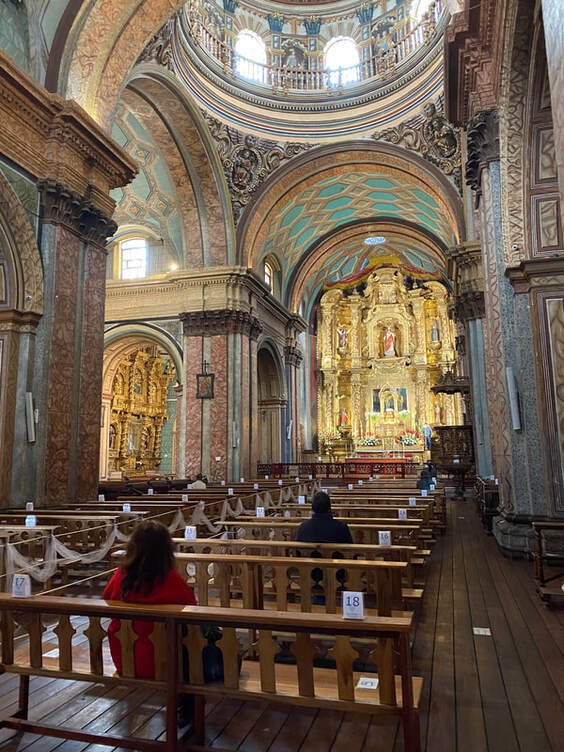





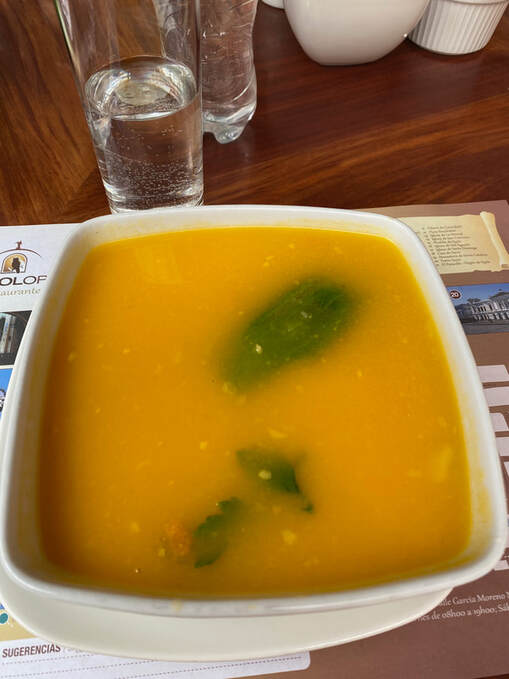
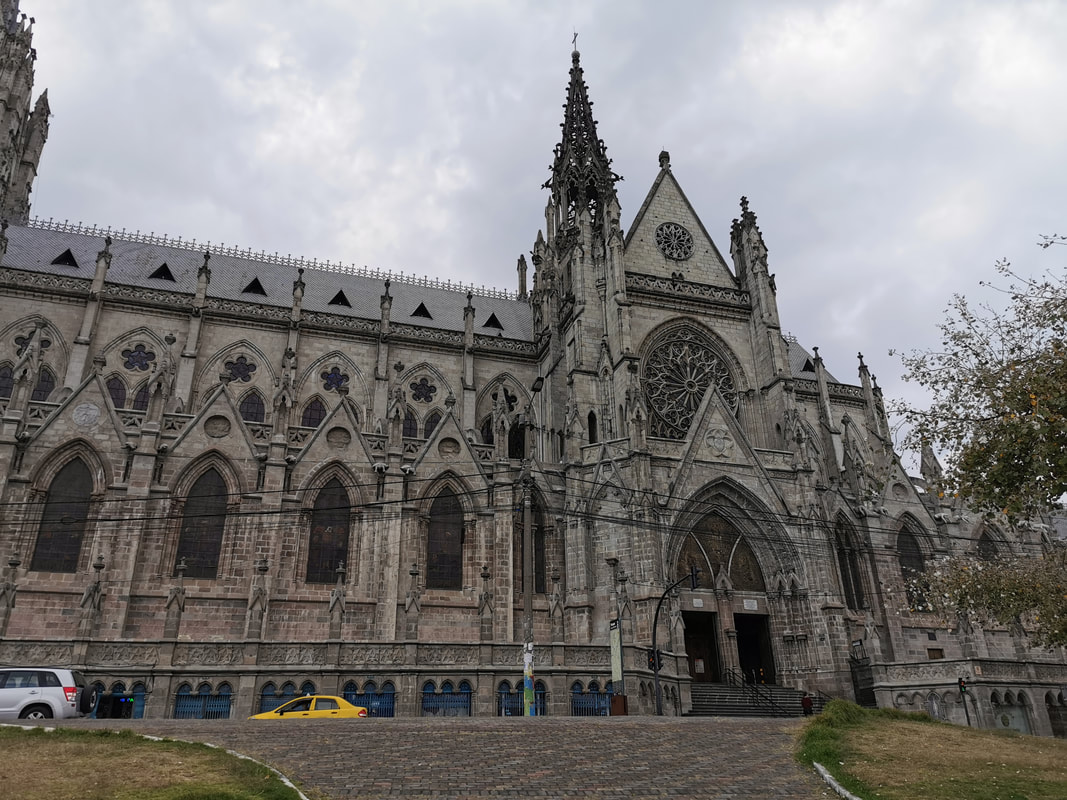


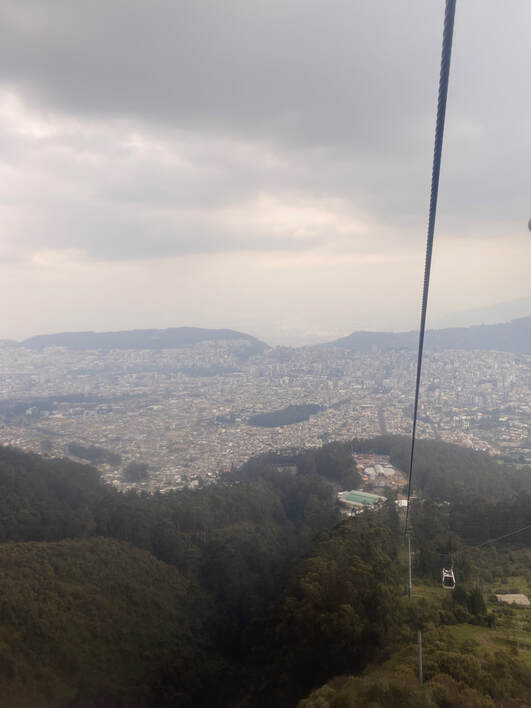
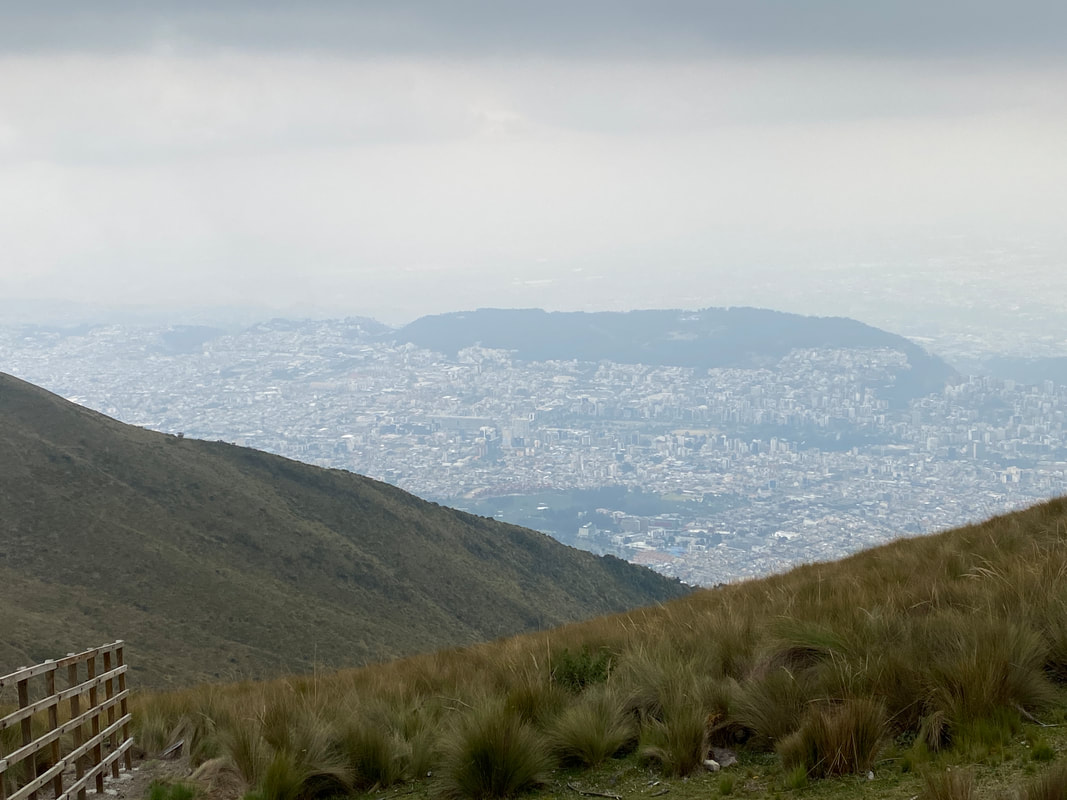









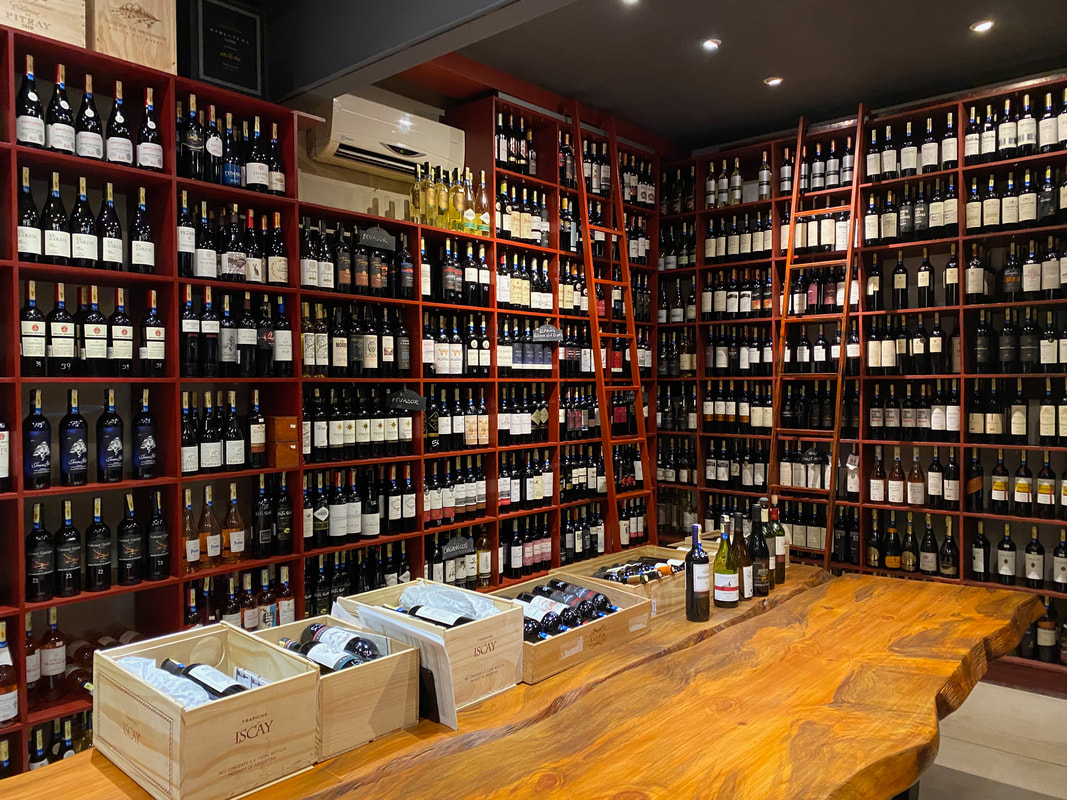


 RSS Feed
RSS Feed